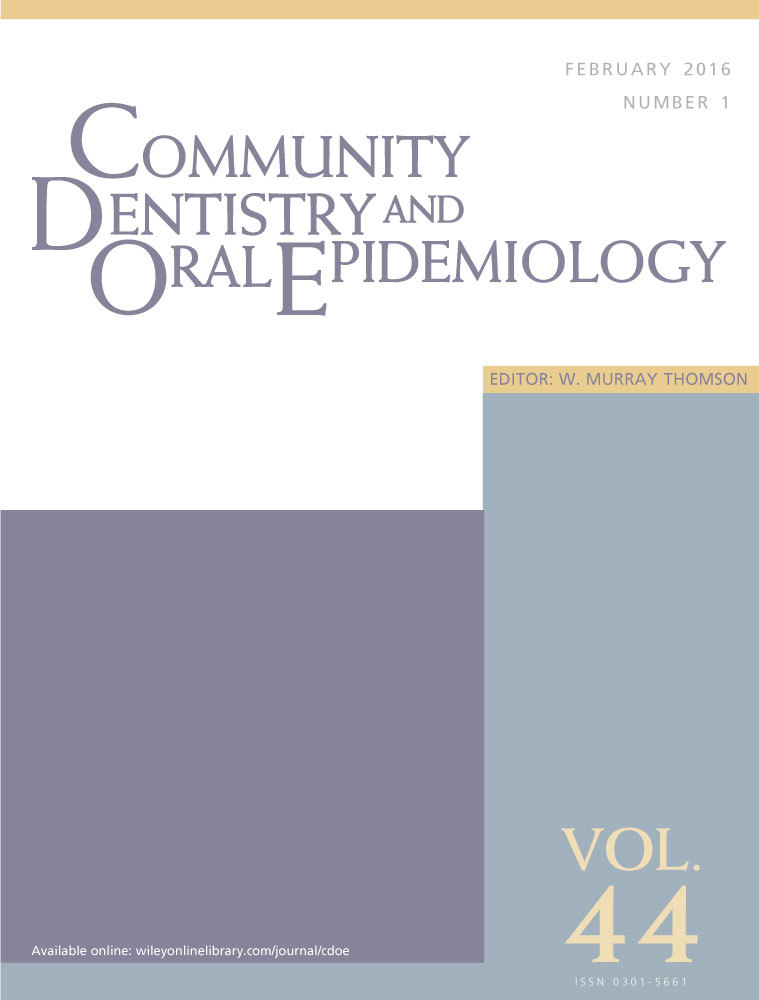A screening model for oral cancer using risk scores: development and validation
Abstract
Objective
A study was conducted to develop and validate a screening model using risk scores to identify individuals at high risk for developing oral cancer in an Indian population.
Methods
Life-course data collected from a multicentre case–control study in India were used. Interview was conducted to collect information on predictors limited to the time before the onset of symptoms or cancer diagnosis. Predictors included statistically significant risk factors in the multivariable model. A risk score for each predictor was derived from respective odds ratios (OR). Discrimination of the final model, risk scores and various risk score cut-offs was examined using the c statistic. The optimal cut-off was determined as the one with good area under curve (AUC) and high sensitivity. Predictive ability of the regression model and cut-off risk score was determined by calculating sensitivity, specificity, positive predictive value (PPV) and negative predictive value (NPV). Models were validated from a bootstrap sample.
Results
Smoking, chewing quid and/or tobacco, alcohol, a family history of upper aero-digestive tract cancer, diet and oral hygiene behaviour were the predictors. Risk scores ranged from 0 to 28. Area under the receiver operating characteristic (ROC) curve for risk scores was good (0.866). The sensitivity (0.928) and negative predictive value (0.927) were high, while specificity (0.603) and positive predictive value (0.607) were low for a risk score cut-off of 6.
Conclusion
A risk score model to screen for individuals with high risk of oral cancer with satisfactory predictive ability was developed in the Indian population. Validation of the model in other populations is necessary before it can be recommended to identify subgroups of the population to be directed towards more extensive clinical evaluation.




